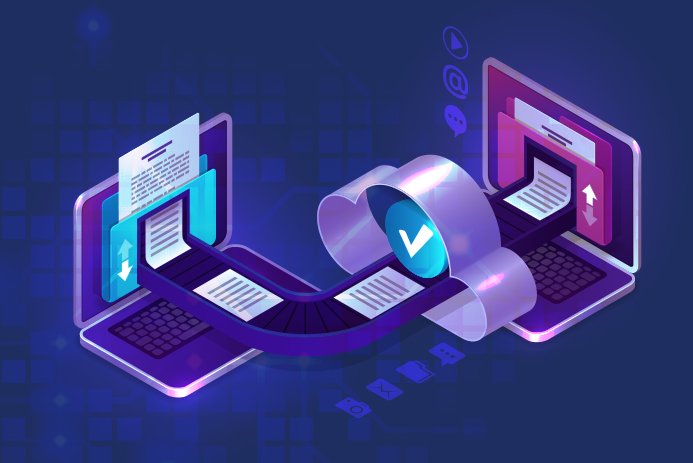In today’s computerized age, remote work and versatility are becoming progressively predominant.
With workers scattered over distinctive areas and utilizing different gadgets, the need for solid data security has never been more noteworthy.
Endpoint backup solutions protect data on remote and on-the-go devices. This article will investigate the backup, why it’s fundamental, and the benefits and key considerations when executing it.
Understanding Endpoint Backup
What are Endpoints?
Endpoints refer to gadgets like laptops, smartphones, tablets, and desktops that connect to a network. These gadgets often contain sensitive trade data and individual data.
What is Endpoint Backup?
Endpoint backup frequently and naturally backs up data stored on these remote and versatile devices to a centralized server or cloud-based storage.
Third-party Endpoint backup software like BDRSuite offers comprehensive and budget-friendly solution for Endpoint backup. It includes remote backup, customizable scheduling & retention policies, and the option to store backups locally or in the cloud. BDRSuite supports Windows, Linux, and Mac Endpoints, making it versatile for different environments. With BDRSuite’s Free Edition, you can backup up to 10 Endpoints for Free. Download BDRSuite and start Endpoint Backup 30-day free trial today.
Working of a Data Protection Strategy
Endpoint backup is a data security methodology that routinely backs up data from personal devices or endpoints, such as laptops, desktops, smartphones, and tablets. Here’s how it regularly works:
-
Selection
Clients or administrators select which files, folders, or data on their endpoint gadgets they need to back up. One can customize the selection process frequently to suit particular needs.
-
Planning
Backup software permits clients to plan when and how regularly backups should happen. It could be hourly, daily, week by week, or on a custom plan.
-
Data Transfer
During a backup operation, the chosen data exchanged from the endpoint device to an assigned backup server or cloud storage area. This exchange can happen over an arrangement or the Internet.
-
Incremental Backups
Many endpoint backup solutions utilize full backup strategies. In these, as it were, the changes or new data since the final backup replication decreased the time and bandwidth required.
-
Encryption
Data transferred during backup encrypted to guarantee security during transfer and stores within the backup store.
-
Retention Policies
Administrators can set retention approaches to decide how long the device keeps the backup copies. Older backups may erase naturally to free up capacity space.
-
Versioning
Some endpoint backup solutions support file versioning, which implies numerous record adaptations. It is often helpful in recovering data.
-
Restoration
In case of data loss or device damage, clients or administrators can restore data from the backup. It will be a complete system recovery or particular recovery of particular files.
-
Monitoring and Management
Administrators regularly have centralized control over the backup processes, permitting them to monitor backup status, implement policies, and troubleshoot issues.
-
Notifications
Endpoint Backup software can send notices to clients or administrators to inform them about the status of backups, including victories, damages, or messages.
-
Compliance and Reporting
The endpoint backup solutions may offer reporting features to assist organizations in meeting administrative compliance necessities by reporting data backup activities.
Why Endpoint Backup Matters?
-
Data Security
The backup guarantees that data stored on personal devices (such as laptops, desktops, and portable devices) is routinely and safely backed up.
It secures against data loss due to equipment damage, accidental deletion, or other unexpected events.
-
Business Continuity
In a business environment, endpoint backup is essential for keeping up progression. If an employee’s gadget fails, they can rapidly restore their work and proceed with their work, minimizing downtime.
-
Compliance and Security
Numerous industries and organizations are subject to data maintenance and security regulations.
It helps meet these compliance requirements by guaranteeing data is appropriately stored, secured, and recoverable when required.
-
Remote Work and Versatility
The backup becomes even more critical with the rise of remote work and portable gadgets. It permits workers to work from any place, guaranteeing their work backs up safely, lessening the chance of data loss.
-
Data Availability
This type of backup ordinarily incorporates simple data recovery and sharing features. It empowers clients to access data from different devices and collaborate with colleagues effectively.
-
Disaster Recovery
Within a calamity like a cyberattack or natural catastrophe, the backup guarantees that essential data can be restored, helping organizations recoup and continue operations more rapidly.
-
Cost Savings
Whereas executing this backup solution may have an introductory cost, it can save cash in the long run by avoiding data loss and related recovery costs.
Critical Considerations in Implementing Endpoint Backup
-
Versatility
Select a solution that can scale along with your organization’s needs. As your workforce develops, so does the volume of data that needs assurance.
-
Data Encryption
Guarantee that data is encrypted both during transmission and capacity to secure against unauthorized access.
-
User-Friendly Interface
A user-friendly backup solution streamlines the method for workers, lessening the probability of blunders and ensuring compliance with backup approaches.
-
Automatic Backup Planning
The capacity to plan programmed backups guarantees that data is reliably secured without relying on manual mediation.
-
Versioning and Recovery Choices
Hunt for this backup solution that offers versioning capabilities, permitting you to recover past versions of files in case of coincidental changes or corruption.
Choosing Between On-Premises and Cloud-Based Solutions
-
On-Premises Endpoint backup
On-premises endpoint backup solutions give total control over data but may require critical framework investment and upkeep.
-
Cloud-Based Endpoint backup
Endpoint Cloud backup solutions offer versatility, availability, and ease of administration but require a reliable internet connection.
Best Practices for Backup
-
Regular backup Testing
Occasionally, test the backup and recovery prepare to guarantee it functions as anticipated and can dependably restore data.
-
Worker Training
Teach workers the significance of data backup and how to utilize the backup solution accurately and store their critical data in their devices while working.
-
Monitoring and Alerts
Execute observing and caution systems to proactively distinguish backup failures or issues, empowering speedy resolutions.
Conclusion
In conclusion, endpoint backup solutions guarantee data security and business progression.
By shielding basic data stored on personal devices, they give a significant layer of security against data loss due to equipment failure, robbery, or client blunder.
These solutions streamline data recovery processes, minimize downtime, and improve organizational efficiency.
As the digital landscape advances, this type of backup remains vital to comprehensive data management and disaster recovery methodology.
Must Read : Best Methods of Data Recovery in 2023 [Recover Files Quickly]



































































